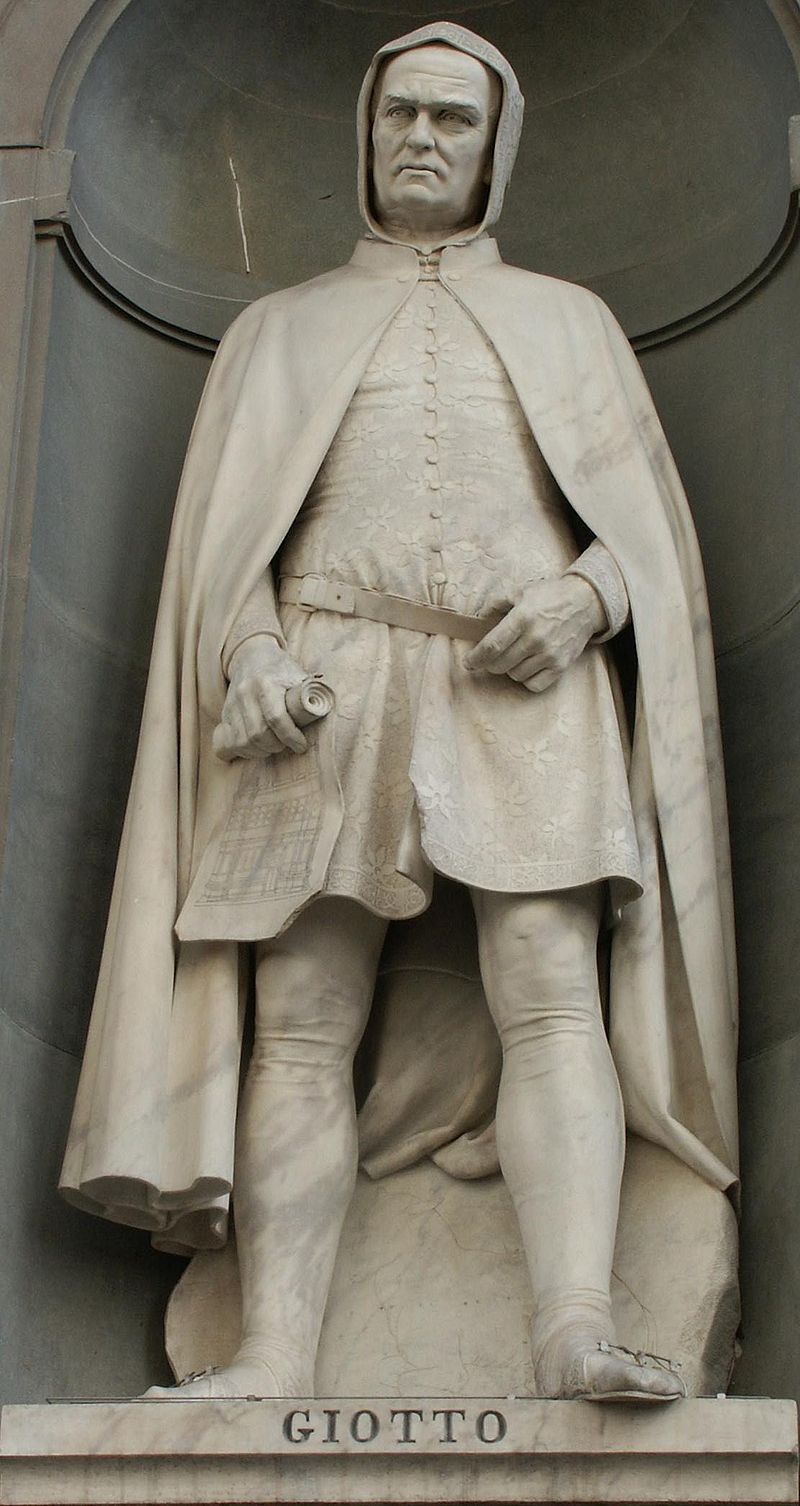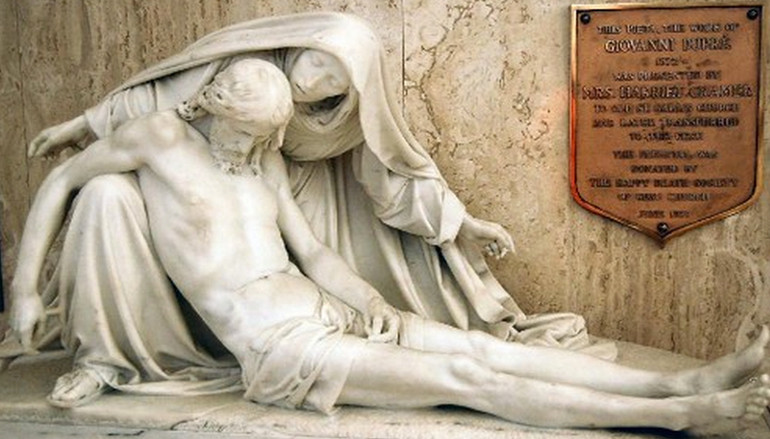By Livia Lupi
Sculptor Giovanni Dupré died on 10 January 1882 in Florence. He was a widely acclaimed and prolific artist.
Born in Siena in 1817, he trained with his father producing copies of Renaissance sculptures. His first renowned work is a sculpture portraying a dying Abel, which was both praised and criticised for its impressive naturalism. Later on, Dupré realised other commissions within the city of Florence, including the statues of Giotto and St Antoninus (1844) for the loggiato of the Uffizi and the Triumph of the Cross lunette for the central portal of the church of Santa Croce (1861).
Dupré’s most important work is perhaps a Pietà realised in 1867 for the Bichi Ruspoli Chapel in the Cimitero della Misericordia in Siena, but he also sculpted numerous busts of prominent figures like Letizia Cristina Bonaparte (Napoleon’s niece) and the composer Giovanni Pacini.
Between 1876 and 1878 he wrote a successful autobiography, entitled Pensieri sull’arte e ricordi autobiografici, which was translated in other languages.
His daughter Amalia followed in her father’s footsteps becoming a successful sculptor in her own right.
Further reading: Giovanni Dupré, Thoughts on Art and Autobiographical Memoirs
Antonio Ciseri, Portrait of Giovanni Dupré, 1885, oil on canvas. Pitti Palace, Florence.
Giovanni Dupré, Dying Abel, 1842, marble. Hermitage, St Petersburg.
Dupré, Giotto, 1844, marble. Loggiato of the Uffizi, Florence.
Dupré, Triumph of the Cross, 1861, marble. Santa Croce, Florence.
Dupré, Pietà, 1867, marble. Bichi Rusconi Chapel, Cimitero della Misericordia, Siena.




